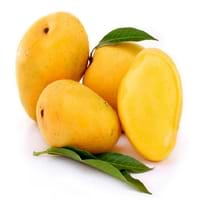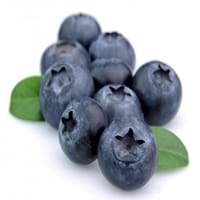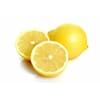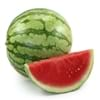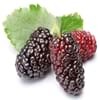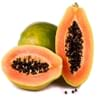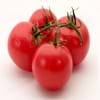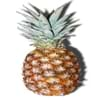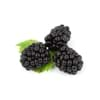Health Benefits
Cancer prevention, Cures fatigue, Heart care, Prevents strokes
Cancer prevention, Heart care, Increases metabolic rate, Strengthening of bones, Treatment of skin Diseases
General Benefits
Anti oxidant properties, Boosts immune system, Controls blood pressure, Digestive aid, Improves eye vision, Maintains healthy cholesterol level
Anti oxidant properties, Boosts immune system, Digestive aid, Eye care, Improves blood circulation, Sore throat treatment
Skin Benefits
Anti-aging benefits, Brightens and lightens complexion, Skin cleansing, Skin rejuvenation, Treatment of acne, Treatment of blackheads, Treatment of dark spots
Anti-aging benefits, Reduces wrinkles, Skin rejuvenation, Treatment of skin diseases
Hair Benefits
Good conditioner, Prevents hair loss, Treatment of dandruff
Protects hair
Allergy Symptoms
Abdominal pains, Breathing difficulty, Diarrhea, Runny nose, Sneezing, Swelling of mouth, tongue or lips, Watery eyes
Abdominal pains, Coughing, Diarrhea, Itching, Runny nose, Sneezing, Swelling of mouth, tongue or lips, Wheezing
Side Effects
Increase in blood sugar level, Diarrhoea, Weight gain
Allergic reaction
Best Time to Eat
Don't consume at night and before bed, Eat the fresh ones, avoid mixing with any other foods, don't eat after meal., Morning time (before lunch)
Best if taken as a breakfast (or empty stomach), As a snack in the late afternoon, Don't consume at night and before bed, Eat the fresh ones, avoid mixing with any other foods, don't eat after meal., Morning time (before lunch)
Vitamin A (Retinol)
Not Available
Vitamin B5 (Pantothenic Acid)
Not Available
Vitamin B6 (Pyridoxin)
Not Available
Vitamin B9 (Folic acid)
Not Available
Vitamin C (Ascorbic Acid)
Vitamin E (Tocopherole)
Not Available
Vitamin K (Phyllochinone)
Not Available
Lutein+Zeaxanthin
Not Available
Calories in Fresh Fruit with Peel
Not Available
Calories in Fresh Fruit without Peel
Not Available
Calories in Frozen Form
Not Available
Calories in Dried Form
Not Available
Calories in Canned Form
Not Available
Season
Spring, Summer
Summer
Varieties
Alphonso, Valencia Pride, Badami, Chaunsa, Nam Dok Mai, Glenn, Sindhri, Madame Francique, Kesar and Keitt
Dwarf Huckleberry, Cascade Huckleberry, Mountain huckleberry and Blackwinter Huckleberry
Color
Orange, Red, Yellow
Blue, Purple, Purplish black
Inside Color
Yellow
Purple
Origin
Southern Asia
North America
Grows on
Trees
Not Available
Soil Type
Clay, Loam, Sand
Loamy, Sandy, Well-drained
Climatic Conditions
Humid, Warm to hot climate
Humid, Warm
Facts about
- A mango tree can bear fruits even after the age of 300 years.
- Height of a mango tree can be as high as 100 feet.
- In India, mango is known as a symbol of love. Also, a mango basket is considered as the sign of friendship.
- "I'm your huckleberry" is a way of saying that one is just the right person for a given job.
- The phrase "a huckleberry over my persimmon" was used to mean "a bit beyond my abilities".
Top Producer
India
United States of America
Other Countries
Bangladesh, Brazil, China, Indonesia, Mexico, Nigeria, Pakistan, Philippines, Thailand
Canada
Top Importer
United States of America
Canada
Top Exporter
Mexico
Chile
Botanical Name
Mangifera Indica
Gaylussacia brachycera
Synonym
Not Available
Not Available
Subkingdom
Tracheobionta
Tracheobionta
Division
Magnoliophyta
Magnoliophyta
Class
Magnoliopsida
Magnoliopsida
Subclass
Rosidae
Asteridae
Order
Sapindales
Ericales
Family
Anacardiaceae
Ericaceae
Genus
Mangifera
Gaylussacia
Species
M. indica
G. brachycera
Generic Group
Cashew
Heath
Difference Between Mango and Huckleberry
We might think that Mango and Huckleberry are similar with respect to nutritional value and health benefits. But the nutrient content of both fruits is different. Mango and Huckleberry Facts such as their taste, shape, color, and size are also distinct. The difference between Mango and Huckleberry is explained here.
The amount of calories in 100 gm of fresh Mango and Huckleberry with peel is Not Available and 37.00 kcal and the amount of calories without peel is 60.00 kcal and Not Available respectively. Thus, Mango and Huckleberry belong to Low Calorie Fruits and Low Calorie Fruits category.These fruits might or might not differ with respect to their scientific classification. The order of Mango and Huckleberry is Sapindales and Ericales respectively. Mango belongs to Anacardiaceae family and Huckleberry belongs to Ericaceae family. Mango belongs to Mangifera genus of M. indica species and Huckleberry belongs to Gaylussacia genus of G. brachycera species. Beings plants, both fruits belong to Plantae Kingdom.
